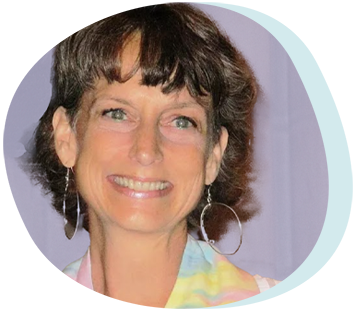Written by: Rev. Andrea “Ani” Vidrine, LCSW
Do you notice that there is a pattern of negative consequences in your life that seems to reoccur like clockwork? I realized a long time ago that some of my thoughts and behaviors were not serving me based on the repercussions in my life, so I decided to think and respond differently. It wasn’t easy to change my habits; especially, it wasn’t comfortable to respond to life in a different way when my insecurities would kick in. But as I practiced this new skill, my relationships improved, and I gained greater peace of mind. Because it has been so beneficial for me, I offer this amazing tool, based on cognitive-behavioral therapy, to my clients. Applying the key concepts takes mindfulness and practice, but it is so worth it. This process can help you break through your conditioning and build healthier relationships — with others and with yourself.
The number one tenet is:
You are always responding to your thoughts about life, not to the actual events.
Everything in life proceeds like this:
First, there is an event, your body has a somatic and emotional response, then you have a thought or interpretation regarding the event and react. Most of the time people are not aware of the thought or interpretation regarding the event, but they know how uncomfortable they feel.
Once you have done whatever is necessary to establish a sense of safety for yourself and bring a sense of balance back to your body, the point of power is at the thought level. You cannot control events, but you can control the thoughts that you have about events. When you feel uncomfortable emotions, know that an old wound within you has been triggered, and take the time to ask yourself what you are thinking, i.e., what is the story I am telling myself about this event? Give yourself time to honor your feelings, and then respond from a place of clarity.

Here are the foundational concepts of this tool:
1. Accept the events and circumstances of life as value-neutral and out of your control.
2. Your thoughts about the things that happen contribute negatively or positively to your experience of life.
3. Your emotions are affected by your thoughts.
4. You have a choice in what you think, say, and do.
While it may be tempting to think that you are a victim of your circumstances and that if someone else or a certain situation would change, you would be happy, the truth is that it is largely your own reaction to events that determines whether you suffer in relation to what has happened. Your power lies in managing your own reactivity. You have no power over what others do — it is none of your business unless the “other” is your child (not an adult child!) or someone infirmed for whom you provide care. You also do not have control over acts of nature.

So, here’s how you utilize this tool:
1. When a circumstance arises in which you feel uncomfortable, call it a “fact” and not a “problem.” For example, perhaps someone has spoken to you in a way that you do not like. Using this tool, you may say to yourself, “[Person] said something to me that I didn’t like,” or “[Person] has not returned my call in 5 days.” Just call it exactly as it is without embellishment. This is the difference between saying, “Taysom Hill scored a touchdown,” and, “Taysom Hill is a great player.” The first is a statement of what actually happened. The second is a value-judgment, which may or may not be true depending on your perspective.
2. Notice your thoughts about the event and your temptation to confuse facts with opinions/assumptions; in other words, separate fact from fiction. Here are some ways you might get confused:
a. You judge the event as bad and then brace against it.
b. You take events or the behavior of others personally (internalizing); for example, “This happened, and it means [something] about me or how the person feels about me.”
b. You project blame on someone (externalizing); for example: “This happened, and it means [something] about someone else.”
c. You catastrophize and assign meaning to the event (globalizing); for example, “This happened, and it means [something] about the world or how the rest of my life will go.”
3. Choose thoughts that are true and create feelings of peace; such as, “I am completely equipped to deal with this situation,” or, “I don’t know their motives, so I will just remain curious,” or, “I choose to focus on what I can do to make this situation better, and let go of what is not in my control.” You can identify thoughts that serve you by noticing how you feel when you think them. A thought such as, “I have the internal resources to deal with this,” will most likely produce a more peaceful emotional state than, “I’m a screw-up. I can’t handle this.”
4. Acknowledge and honor your feelings without projecting blame.
5. Take care of yourself by asking yourself what you need and then giving yourself what you need. This may mean that communicating your needs to others in a non-judgmental and non-accusatory way would be helpful. Maybe you need to do some physical activity, spend some time in nature, take a time out, get some rest, do some journaling, spend time with friends, or whatever seems right to you. Unless you are a child or infirm, it is your responsibility to take care of your own needs. It is not the job of others to take care of your needs, and it is not your job to take care of theirs. You’re an adult.
6. Imagine what it would be like to behave in a different way than your usual, conditioned pattern — a way that represents the highest version of yourself — and do that. Often new behavior includes setting appropriate boundaries, choosing to be patient and kind, and/or forgiving a perceived injury.

Little by little, as you make new choices in how you view the world and how you respond to events, the consequences in your life will change and you will feel better. The patterns that drove you will loosen their grip because YOU are now in the driver’s seat. I know that this is possible for you because when I started managing my mental commentary, acknowledging my feelings, giving myself what I need, and responding from a place of clarity, my experience of life improved and continues to get better.
If you want to be happy, you have to do things that cultivate happiness. Don’t want to exercise and eat right? No problem, just don’t expect to be healthy and strong. Don’t want to be patient and mindful of how you communicate? No problem, just don’t expect that your relationships will flourish. Don’t want to let your partner know how you feel? No problem, just don’t expect to be resentful. The choices in how you think, speak, and act are creating your experience of life. Your choices matter.
But don’t take my word for any of this. Try utilizing this process and test it for yourself. I am confident that the way that you experience life will be all the better for it because it has worked for me. I know it can work for you, too.
About the Author
Rev. Andrea “Ani” Vidrine, LCSW serves as a licensed clinical social worker, spiritual director, enneagram mentor, and interfaith/interspiritual minister. She has provided continuing education for counselors through TPN, the NASW/Louisiana chapter, the Louisiana Association for Spiritual, Ethical, and Religious Values in Counseling, and dietitians through the Council on Renal Nutrition. Ani currently serves on staff at The Shalem Institute for Spiritual Formation in Washington, D.C. in their Spiritual Guidance program. For more information, please visit her website at www.alovecenteredlife.com.

Rev. Andrea “Ani” Vidrine, LCSW
